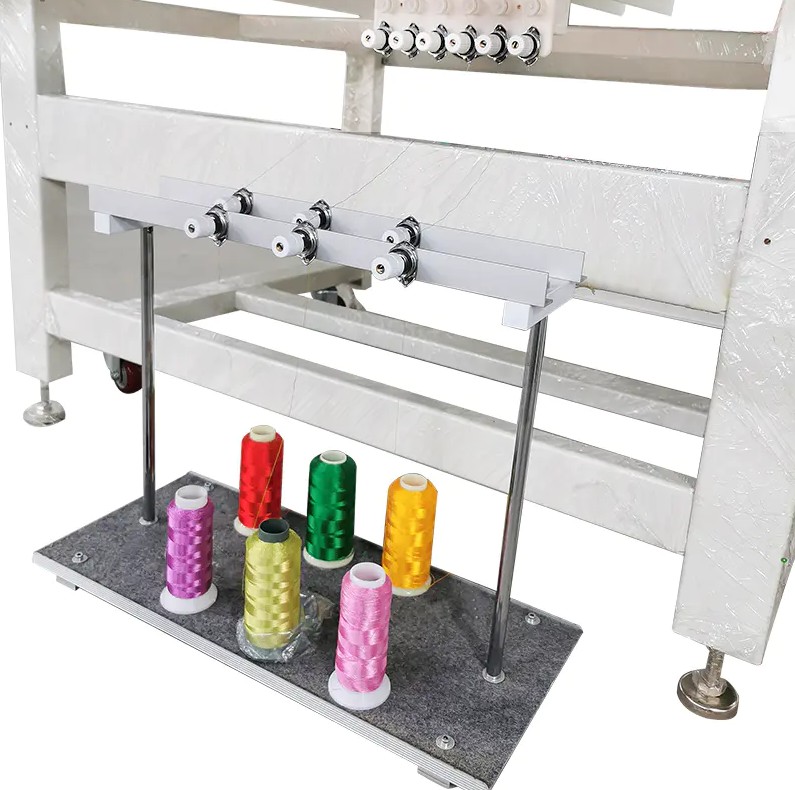In the intricate world of textile embellishment, where every thread and stitch counts, chenille machines have emerged as the unsung heroes, infusing life and depth into fabrics like never before. These remarkable devices, often the unsung heroes of the textile industry, have played an instrumental role in shaping the landscape of 3D embroidery.
Chenille, derived from the French word for caterpillar due to its fuzzy appearance, is a unique style of embroidery that brings a three-dimensional, textured quality to fabric. While chenille-style embroidery has been around for centuries, modern chenille machines have transformed this traditional technique into a high-tech art form.
The Birth of Chenille Embroidery Machines
The story of chenille embroidery machines begins with the desire to replicate the intricate and labor-intensive hand chenille process using automation. This sought-after innovation aimed to overcome the challenges of mass production and create designs that were both intricate and scalable.
Traditional chenille embroidery involves layering multiple threads on top of each other, creating a plush, velvety texture. To achieve this manually was a time-consuming and intricate process, thus prompting the need for automated machinery.
The Anatomy of a Chenille Machine
A modern chenille machine is a complex piece of engineering, where precision meets creativity. Its components work in harmony to craft the 3D effects that make chenille embroidery so captivating.
1. Needle Bar and Needles: The chenille machine features a specialized needle bar with multiple needles. These needles are responsible for creating the loops that form the plush texture. The number of needles can vary depending on the complexity of the design.
2. Thread Feeding Mechanism: Chenille machines have separate thread feeding systems for each needle. These threads are meticulously guided through tension discs, ensuring uniform thread tension.
3. Looper Mechanism: The looper system, composed of hooks and guides, plays a pivotal role in creating the loops and pile characteristic of chenille embroidery. It ensures that each loop is correctly formed and aligned with the previous one.
4. Cutting Mechanism: Chenille machines are equipped with a precise cutting mechanism that shears the loops at the desired length, producing the distinctive fuzzy texture. The timing of the cutting action is carefully synchronized with the movement of the fabric.
5. Control System: Modern chenille machines are computer-controlled, allowing for intricate designs with varying textures and pile heights. These designs are programmed into the machine and dictate the movement of the needles and the precise timing of the cutting mechanism.
Chenille Machines and 3D Embroidery
Chenille machines excel in creating designs that pop out of the fabric. They are particularly popular in applications where a textured, three-dimensional effect is desired. This includes creating letters and numbers for varsity jackets, sports team logos, and various decorative elements on garments and accessories.
The versatility of chenille machines extends to a wide range of materials, from fabrics to felt and even leather. This adaptability makes them invaluable tools for customizing everything from letterman jackets to baseball caps and beyond.
The Future of Chenille Embroidery
As with many aspects of the textile industry, chenille machines continue to evolve. Advances in technology have led to machines with improved precision, speed, and versatility. The integration of digital design capabilities has opened up a world of possibilities for creating intricate and customized chenille patterns.
While the heart of chenille embroidery remains its plush, three-dimensional texture, the future holds endless opportunities to push the boundaries of this art form. With new materials, colors, and digital design techniques, chenille machines are sure to remain at the forefront of 3D embroidery, breathing life and depth into textiles for years to come.
In the heart of the textile industry, chenille machines beat as the pulse of 3D embroidery, breathing life and depth into fabrics. Their intricate design, combined with digital advancements, has elevated this traditional art form into a high-tech wonder, adding a layer of tactile luxury to textiles. As these machines continue to evolve, the future of chenille embroidery holds exciting prospects, where innovation meets tradition to weave the plush, velvety threads of creativity into the fabric of our lives.

 English
English Español
Español عربى
عربى


